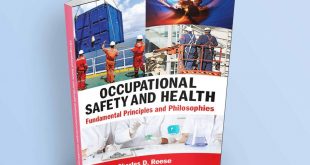Fundamental Principles of Occupational Health and Safety
Occupational health and safety (OHS) is an essential discipline that focuses on the prevention of injuries and illnesses in the workplace. It encompasses a broad range of strategies and practices designed to protect the physical, mental, and emotional well-being of workers. In my role as an industrial safety officer, I have observed that the success of any organization is inherently linked to its commitment to maintaining a safe and healthy working environment. This article delves into the fundamental principles of occupational health and safety, exploring its objectives, legal frameworks, risk management processes, and the role of continuous improvement in fostering safer workplaces.

Objectives of Occupational Health and Safety
The primary aim of OHS is to ensure the safety, health, and welfare of employees at work. This involves creating an environment where hazards are minimized and risks are effectively managed. Key objectives include:
- Preventing Workplace Injuries and Illnesses: The foremost goal is to reduce the occurrence of accidents, injuries, and work-related illnesses.
- Promoting Worker Health and Well-being: OHS extends beyond physical safety, emphasizing mental health and overall well-being.
- Ensuring Legal Compliance: Organizations must adhere to national and international safety regulations.
- Enhancing Productivity and Efficiency: A safe workplace boosts morale and enhances worker productivity by minimizing disruptions caused by accidents.
Legal Frameworks and Standards
Occupational health and safety laws provide the foundation for workplace safety practices. These regulations are established at local, national, and international levels, ensuring a consistent approach to risk management across industries. Employers are legally obligated to provide a safe working environment, while employees are expected to comply with safety protocols.
Key Legal Frameworks
- Occupational Safety and Health Act (OSHA): In the United States, OSHA sets and enforces standards to ensure safe and healthy working conditions.
- International Labour Organization (ILO) Conventions: The ILO provides guidance on global standards, such as Convention No. 155 on Occupational Safety and Health.
- European Framework Directive on Safety and Health at Work: This directive establishes a baseline for safety practices across European Union member states.
Employers must also adhere to industry-specific regulations, such as those for construction, manufacturing, and healthcare. Regular audits and inspections ensure compliance and identify areas for improvement.
Principles of Risk Management
Risk management is the cornerstone of OHS. It involves identifying potential hazards, assessing their likelihood and severity, and implementing measures to control them. The process typically follows these steps:
1. Hazard Identification
A hazard is any potential source of harm or adverse health effect. Common workplace hazards include:
- Physical Hazards: Noise, vibration, extreme temperatures, and machinery.
- Chemical Hazards: Exposure to hazardous substances like asbestos, solvents, or pesticides.
- Biological Hazards: Bacteria, viruses, and other pathogens, especially in healthcare and laboratory settings.
- Ergonomic Hazards: Poor workstation design, repetitive movements, and heavy lifting.
- Psychosocial Hazards: Workplace stress, harassment, and violence.
2. Risk Assessment
Once hazards are identified, they are analyzed to determine their likelihood of occurrence and potential impact. This assessment helps prioritize risks and allocate resources effectively.
3. Risk Control
The hierarchy of controls is a widely used framework for mitigating risks:
- Elimination: Removing the hazard entirely.
- Substitution: Replacing the hazard with a less dangerous option.
- Engineering Controls: Isolating workers from hazards using physical measures, such as barriers or ventilation systems.
- Administrative Controls: Implementing policies and procedures, like training and scheduling, to reduce exposure.
- Personal Protective Equipment (PPE): Using gear such as helmets, gloves, and masks as a last line of defense.
Employee Involvement and Training
A successful OHS program requires active participation from employees at all levels. Workers are often the first to encounter potential hazards and can provide valuable insights into mitigating them. Effective training ensures that employees understand safety protocols and can respond appropriately in emergencies.
Components of Training Programs
- Induction Training: Introduces new employees to workplace safety policies and procedures.
- Task-Specific Training: Focuses on the safe operation of machinery and handling of hazardous materials.
- Emergency Preparedness: Covers fire drills, evacuation procedures, and first aid.
- Ongoing Education: Regular refresher courses keep workers updated on best practices and regulatory changes.
Importance of Workplace Culture
A positive safety culture is integral to the success of OHS initiatives. It reflects the shared values, beliefs, and practices that prioritize safety and health. Leadership commitment plays a crucial role in shaping this culture. When managers demonstrate their dedication to safety, employees are more likely to follow suit.
Building a Safety Culture
- Leadership Commitment: Senior management must actively support and participate in safety programs.
- Open Communication: Encourage employees to report hazards and near-misses without fear of reprisal.
- Recognition and Rewards: Acknowledge and reward safe behaviors to reinforce positive actions.
- Continuous Improvement: Regularly review and update safety practices to adapt to changing circumstances.
Monitoring and Evaluation
Continuous monitoring and evaluation are vital for assessing the effectiveness of OHS programs. Key performance indicators (KPIs) help measure success and identify areas needing improvement. These indicators may include:
- Incident Rates: Frequency of workplace accidents and illnesses.
- Inspection Results: Outcomes of safety audits and inspections.
- Employee Feedback: Insights from surveys and suggestion programs.
- Compliance Records: Adherence to legal and regulatory requirements.
By analyzing this data, organizations can identify trends, address weaknesses, and implement corrective actions to enhance safety.
Technological Advancements in OHS
Emerging technologies are transforming the field of occupational health and safety. Innovations such as wearable devices, artificial intelligence, and virtual reality are enhancing hazard detection, training, and monitoring capabilities.
Applications of Technology
- Wearable Devices: Monitor workers’ health parameters, such as heart rate and body temperature, to detect signs of fatigue or heat stress.
- AI-Powered Analytics: Analyze vast amounts of data to predict and prevent accidents.
- Virtual Reality Training: Simulates real-world scenarios, providing immersive and effective safety training.
- Drones: Inspect hard-to-reach areas, such as rooftops or confined spaces, reducing the risk to human workers.
Challenges in Occupational Health and Safety
Despite significant progress, several challenges persist in the implementation of OHS programs. These include:
- Resource Constraints: Small and medium-sized enterprises often lack the financial and human resources for comprehensive safety programs.
- Compliance Gaps: Ensuring adherence to regulations can be challenging, particularly in regions with weak enforcement mechanisms.
- Changing Work Environments: Remote work, gig economy jobs, and technological advancements introduce new risks that require updated safety practices.
- Cultural Barriers: In some organizations, resistance to change and lack of awareness hinder the adoption of safety measures.
Conclusion
The fundamental principles of occupational health and safety are essential for protecting workers and ensuring organizational success. By adhering to legal frameworks, managing risks effectively, fostering a positive safety culture, and leveraging technological advancements, organizations can create safer workplaces. As an industrial safety officer, I firmly believe that continuous improvement and proactive engagement are key to overcoming challenges and achieving long-term safety goals. A commitment to OHS not only safeguards employees but also enhances productivity, reputation, and overall sustainability.
 Boilersinfo Boiler and Mechanical Power Digital Library
Boilersinfo Boiler and Mechanical Power Digital Library





